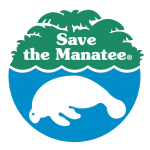Caxambas Pass Shelling is the sweet spot where Gulf energy, shifting sandbars, and the Ten Thousand Islands all conspire to drop treasures at your feet. Tucked along the south end of Marco Island between the tip of Marco and Kice Island, the pass funnels tides through a maze of shoals and channels. Those moving waters sort, tumble, and concentrate shells in specific seams. When a family arrives with the right timing, safe footing, and a little local strategy, Caxambas turns into a live-action treasure hunt that kids and grandparents remember long after the suitcases are unpacked.
Why Caxambas Pass shelling is Great
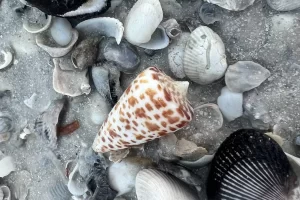
The family-friendly promise of Caxambas Pass Shelling
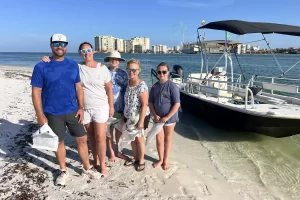
When dolphins roll the channel edge or pelicans plunge into bait schools, the beach break turns into a nature show without a long hike.
Better still, there are sheltered pockets near the bars that stay comfortable even when the main pass is zipping along. With common sense and a local guide, families enjoy the action of a dynamic inlet while staying well clear of the heavy current lanes.
Timing the pass: tides, winds, and windows
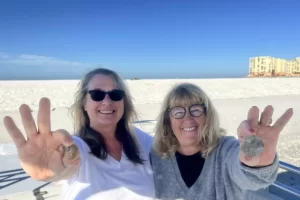
Wind can open or close these windows by inches; a light northwest puff nudges Gulf shells landward in winter, while calm summer dawns reveal glassy water where subtle shell glints are easy to spot. Cloud cover flattens glare, helping kids see patterns and colors instead of white sparkle.
Because the bars shift through the season, it pays to check the contour at the start of any trip rather than assuming yesterday’s seam still runs true. Local captains treat Caxambas like a living map—one they redraw every time the tide flips.
Safety first in a working pass
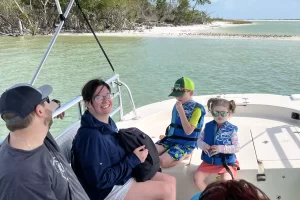
Closed-toe water shoes make oyster stubs and shell shards a non-event. A slow, eyes-down “stingray shuffle” keeps rays from surprise naps in warm shallows. Parents keep one eye on kids and another on the water color; darker, deeper green usually means faster current and a polite step back.
When in doubt, follow a guide’s shoulder line to stay inside the safest contour. The payoff is big: plenty of shells without flirting with the zones that move too quickly.
What you can expect to find Shelling at Caxambas Pass
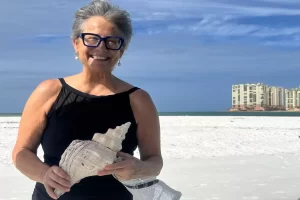
Lightning whelks show up after stronger pushes; their left-handed whorls make a fun, teachable moment. Scallops offer color for younger kids, while kittens’ paws and calicos fill out a beginner’s collection. After big winter blows, heavier pieces—whelk fragments, horse conch chips, and cockles—stack on the windward shoulders of the bars.
Spring and early summer reward “micro-shellers” who kneel at the wrack and sift for tiny wentletraps and dwarf olives. Because the pass is constantly sorting, even a small patch can flip from ho-hum to hot in minutes.
Caxambas Pass Shelling: the sand dollar spotlight
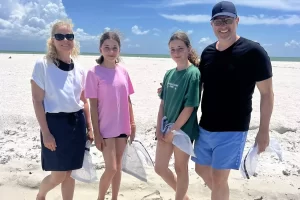
Live sand dollars, however, belong to the sea. They feel velvety, bristly, or cool to the touch, and they’re often a darker tan to olive color with tiny moving spines.
The simple rule is easy for kids: if it’s fuzzy, it’s alive—lift, admire, and gently return it to the water. When children learn this early, the pass becomes a classroom for stewardship, not just a means of collecting.
Later at home, that snow-white test on the shelf means more because it was found right.
Microhabitats that produce
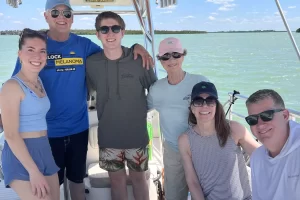
The bar crown—the highest, flattest section—collects lighter tests and scallops that have sailed over the lip and stalled. The lee ripple field—ankle-deep water marked by even, combed lines—holds tiny gems for patient eyes.
Families can divide and conquer: one adult scans the crown for sand dollars and scallops while another kneels in ripples with the kids to reveal banded tulips and micros. Because the microhabitats are close together, younger children can bounce between successes without long walks or frustration.
Caxambas Pass Shelling: Reading the pass like a local
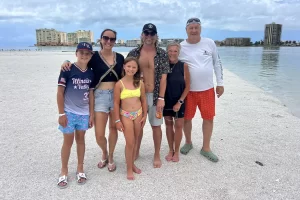
A sudden change from sugar sand to a grittier, pebbled mix suggests a “catcher’s mitt” where heavier shells dropped out as the current slowed. A pile of heavy fragments tells you larger, intact versions were moving too; a quick scan twenty feet upcurrent may reveal them intact.
Even the pattern of baitfish matters: when small flashes hold on the seam, the same seam is nudging shells. Families quickly catch on. Once a teenager spots how one clue leads to a handful of keepers, the hunt becomes a game of pattern, not luck.
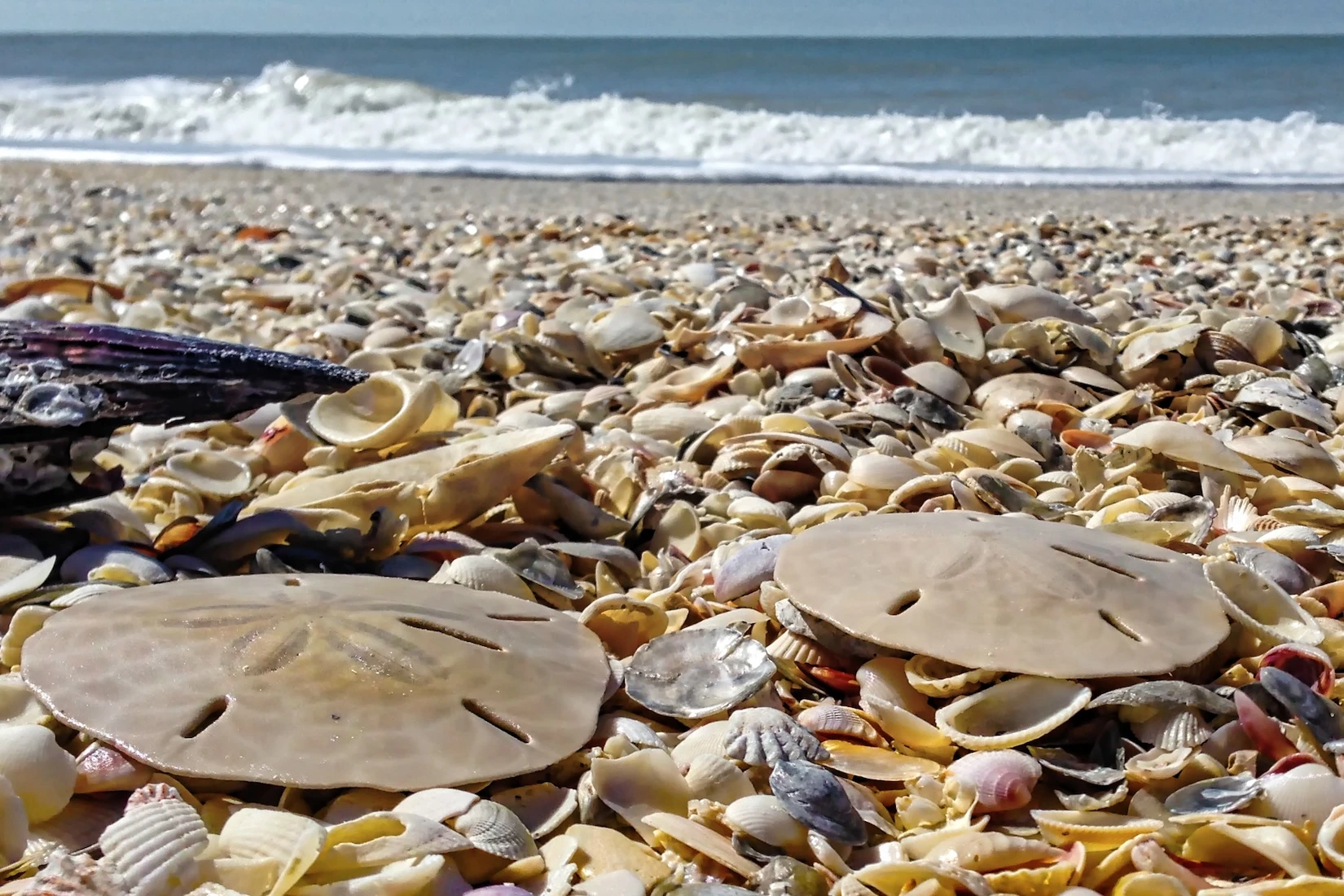
The Barrier Island Shelling Tour is the ultimate shelling adventure for those looking to discover rare and beautiful seashells in untouched, remote locations. This guided boat tour takes you beyond the busy beaches to the best shelling hotspots in the Ten Thousand Islands, where you’ll have the chance to collect sand dollars, alphabet cones, lightning whelks, and even the elusive Junonia.
2.5 hours: $125 Tickets | $625 Private
What to bring (and what to leave)
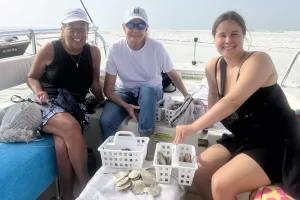
Closed-toe water shoes protect feet and make parents relax. A small freshwater bottle helps rinse hands and shells before snacks. Reef-safe sunscreen helps the ecosystem you’re enjoying.
Leave the big, rigid buckets at home; they encourage over-collecting and tire out younger kids. A light bag and frequent “show and tell” pauses make better memories than a heavy haul.
Weather seasons and shelling moods
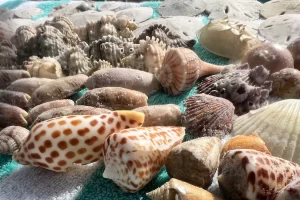
Winter and early spring fronts set up strong northwest swells that push Gulf material toward the bars, then low humidity and clean air make even tiny shells pop visually.
Late spring’s morning calms are ideal for spotting sand dollars in glassy shallows.
Summer’s afternoon sea breezes can chop up the outer edge, but early mornings are friendly, and warm water invites longer, playful sessions for kids.
Early fall brings the biggest resets, when stronger systems rebuild the bar edges and create new seams. The constant theme is renewal; families can come back to the past in different months and meet a familiar friend wearing new clothes.
Why go with a guide—Florida Island Tours’ approach
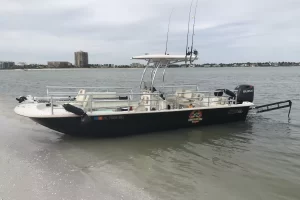
The captains plan departures to “meet the tide,” not fight it, and they choose the safest interior bars for families with young kids. They bring mesh bags, gentle teaching, and the patience to help each child find something special.
Because Florida Island Tours departs from a private dock in Goodland, the boats reach Caxambas quickly while avoiding crowded ramps, and small groups mean captains can pivot the plan if a pod of dolphins shows or a new seam lights up. The goal is simple: maximize delight, minimize friction, and model ethical collecting so kids learn the proper habits on day one.
Finding “Second Chance” and other ephemeral bars

It appears, shifts, and sometimes disappears after big weather, living up to its name by giving families a second chance at a great spread when the main bar is picked over.
Because these features change, a chart can’t promise them; a captain reads the morning’s water color, swell angle, and sand stain to know whether the shoal will reward a stop.
Families love these surprises. When a guide smiles and says, “One more quick hop,” the boat ride becomes part of the treasure hunt.
Teaching kids the right way—ethics that stick
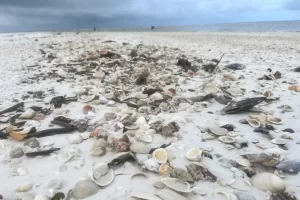
Guides reinforce the code with curiosity; they show the tiny animal that once lived in the empty test and explain how that shell can become the mobile home for a hermit crab tomorrow.
When a child chooses a few favorites instead of everything in reach, the story they carry home is stronger—and their display at home looks better too.
Turning a good spot into a great session at Caxambas Pass Shelling
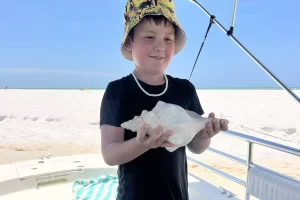
Crouching at kid height reveals shine that adults miss from standing height. Switching to “fan and feel” where sand is slightly silty uncovers olives that hide under a teaspoon of sand. Sharing the search—one person scanning crowns, another working ripples—spreads luck across the family.
Ten minutes of patient searching on a promising seam beats a half-hour of distracted walking on the wrong contour.
When the pass looks quiet
Every spot has quiet moods. If Caxambas seems sleepy, it’s often because you’re a few feet off the seam. Slide across the bar in slow zigzags until the underfoot texture changes; gritty crunch underfoot is a hint you’ve found a catcher. Watch where small ripples bend and collide; that “crease” often pockets shells. If the crown is clean, check the inner slope where yesterday’s push dropped lighter material, or kneel at the landward wrack where scouts miss micro-shells while racing to the water. Families are often one minor adjustment away from a handful of good finds.
Caxambas Pass Shelling: A simple plan that families can follow
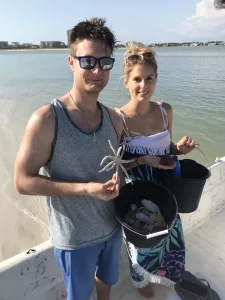
First, pick the right window—aim for the last hour of a falling tide or the first hour of the rise, with morning light if possible.
Second, choose the safest interior bar and walk the crown to mark the shell line, then loop back along the ripple field to pick up the smaller gems.
Third, pause for a “show and tell” regroup, rinse hands, and reset your eyes; those breaks keep kids engaged and help adults notice what just changed.
With that rhythm, even first-timers feel like locals by the end of an hour.
How Florida Island Tours makes it effortless
Florida Island Tours bakes that plan into a fun morning. Captains time departures to the best tide window, brief families on the day’s sandbar map, and anchor where footing is friendly. They carry Coast Guard–approved life jackets in all sizes, keep a cooler with ice for drinks, and share gentle tips that turn random picking into thoughtful hunting. When dolphins surface along the channel edge, they pause so kids can watch before hopping back to the bar. At the end, captains help families curate a small, beautiful keepers’ collection and snap photos so parents can enjoy rather than document. It’s a low-stress way to unlock a special corner of Marco Island without guesswork.
Caxambas Pass Shelling: Fun Fact
The five-point “flower” on a sand dollar is called a petaloid. Those petaloids are actually part of a breathing system that helps move water over the animal’s body. Kids love learning that the pretty pattern once had a job.
Caxambas Pass Shelling: Captain’s Tip
Start with the bar crown for sand dollars, then drop one step down the inner slope and shuffle in place for thirty seconds. Wait for the tiny puffs of settling sand to clear, and look for the soft oval shadow that remains. Many families find their best dollar on that second step, not the top.
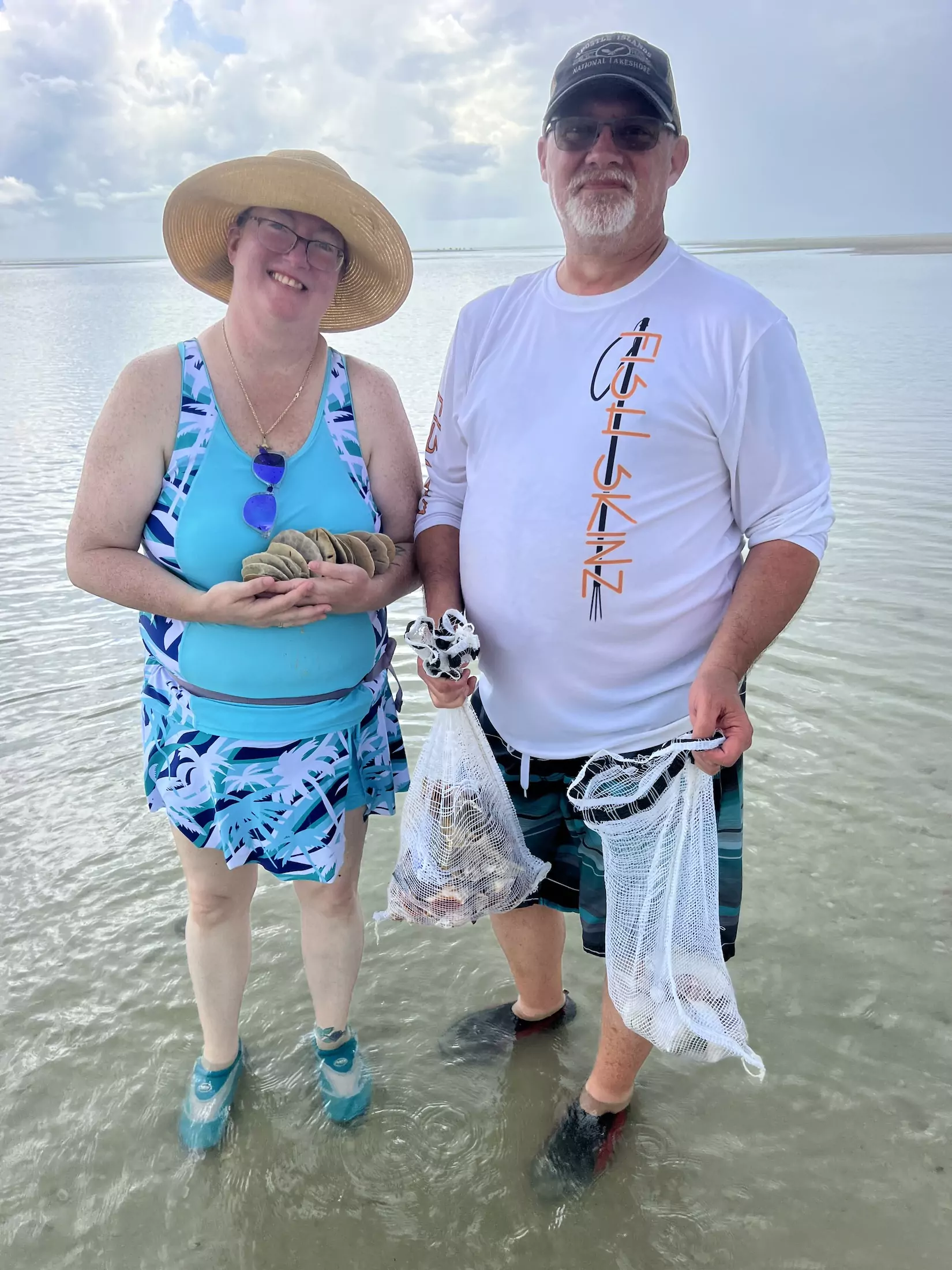
”We had looked at a lot of tours but went with Florida Island Tours, and we are super happy we did!!!! Capt Nate was awesome, very friendly, VERY knowledgeable, he answered every question my husband ask him. This was our first shelling adventure and Captain Nate made it awesome!!!! If you’re looking for exceptional shelling trip call Captain Nate, you will not be disappointed!!!! Had so much fun and found a lot of shells and sand dollars!!!! We HIGHLY recommend!!!!
Donna R.Des Moines, IA
Caxambas Pass Shelling FAQ
Frequently asked questions families ask us
 Do we need to wade into deep water to find good shells?
Do we need to wade into deep water to find good shells?
No. Most family-friendly shelling happens in ankle-to-mid-calf water on the interior sandbars. Staying inside the bar—away from the main channel—keeps things easy and safe.
Are live shells common, and what should we do if we find one?
Yes, you’ll see them often. Enjoy the find, learn from it, and gently return it to the water. If a sand dollar feels fuzzy or bristly, it’s alive—admire and release.
When is the best season or time of day to shell here?
Winter fronts and early spring mornings create big “resets” that stack fresh shells. Summer dawns bring calm, clear water, making spotting shells easy. Aim for a good tide window in the morning whenever you can.
How long should we plan for a shelling session?
Plan for 90 minutes to two hours. That length fits most kids’ attention spans, avoids the hottest sun, and aligns with the best slice of the tide.
Is Caxambas Pass a good first shelling stop for families?
Absolutely. Multiple microhabitats sit side by side, so kids can move from the bar crown to ripple troughs without long walks. The easy variety shortens the learning curve and keeps everyone engaged.
A last word for families planning their trip
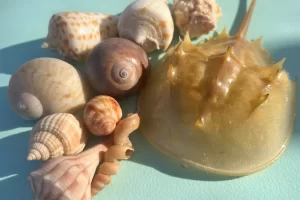
When you’re ready to meet the tide instead of chasing it, Florida Island Tours stands by to map the morning, read the water, and lead your family to the friendly side of a working pass. The dolphins will likely be cruising the edge, the bars will be telling their story, and the sand dollars will be waiting for the careful eyes who know what fuzz means. See you on the water. 🌊
Ready to Go Shelling at Caxambas Pass?
Ultimately, Caxambas Pass rewards patient eyes, light gear, and kind collecting. With the right tide, everyday moments become keepsakes. Kids learn ethics, parents relax, and grandparents enjoy easy footing. Meanwhile, dolphins and birds often add a perfect flourish. For a smooth, safe day, let Florida Island Tours time the window and guide the bar. Then bring curiosity, leave only footprints, and carry home better stories than bags.



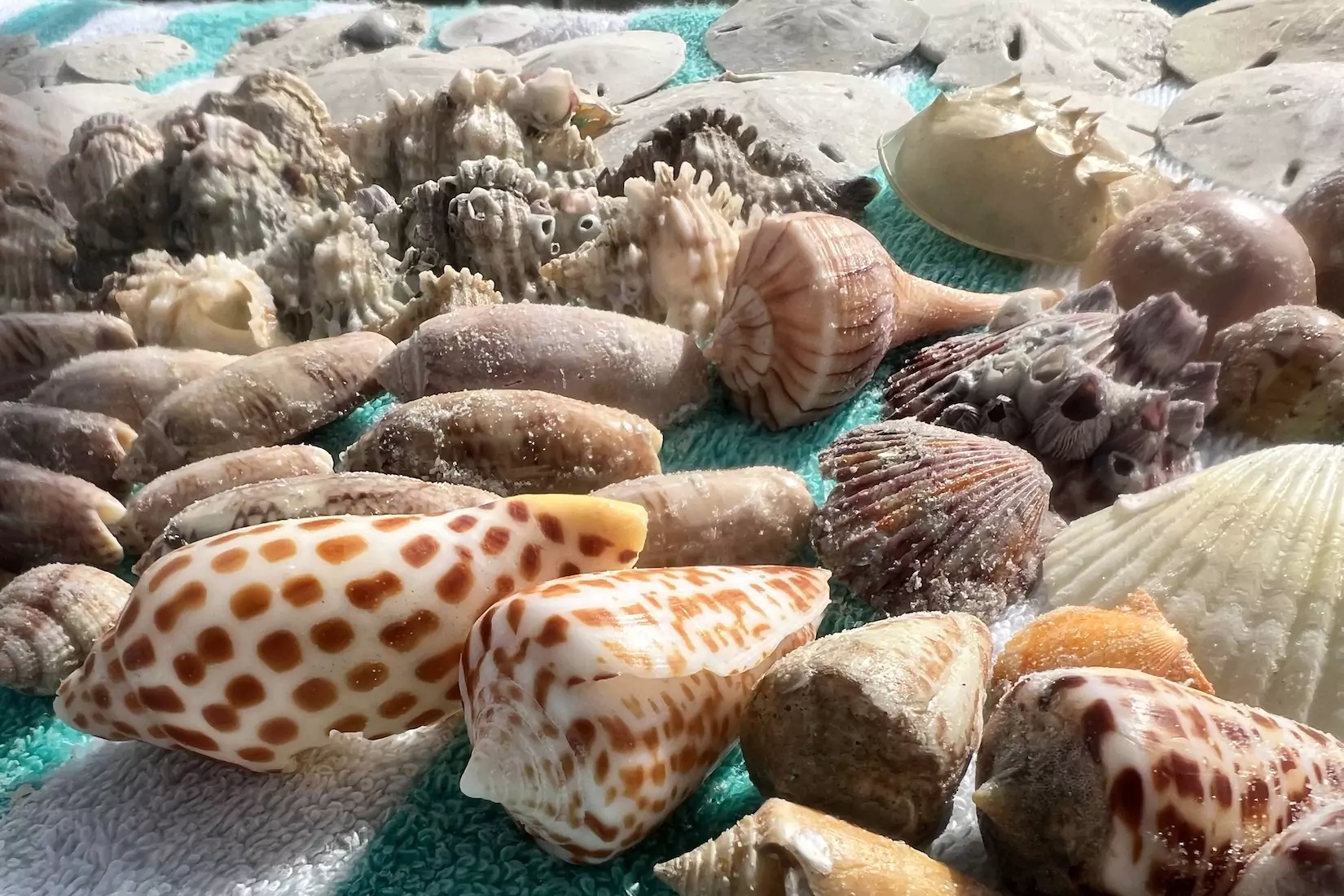
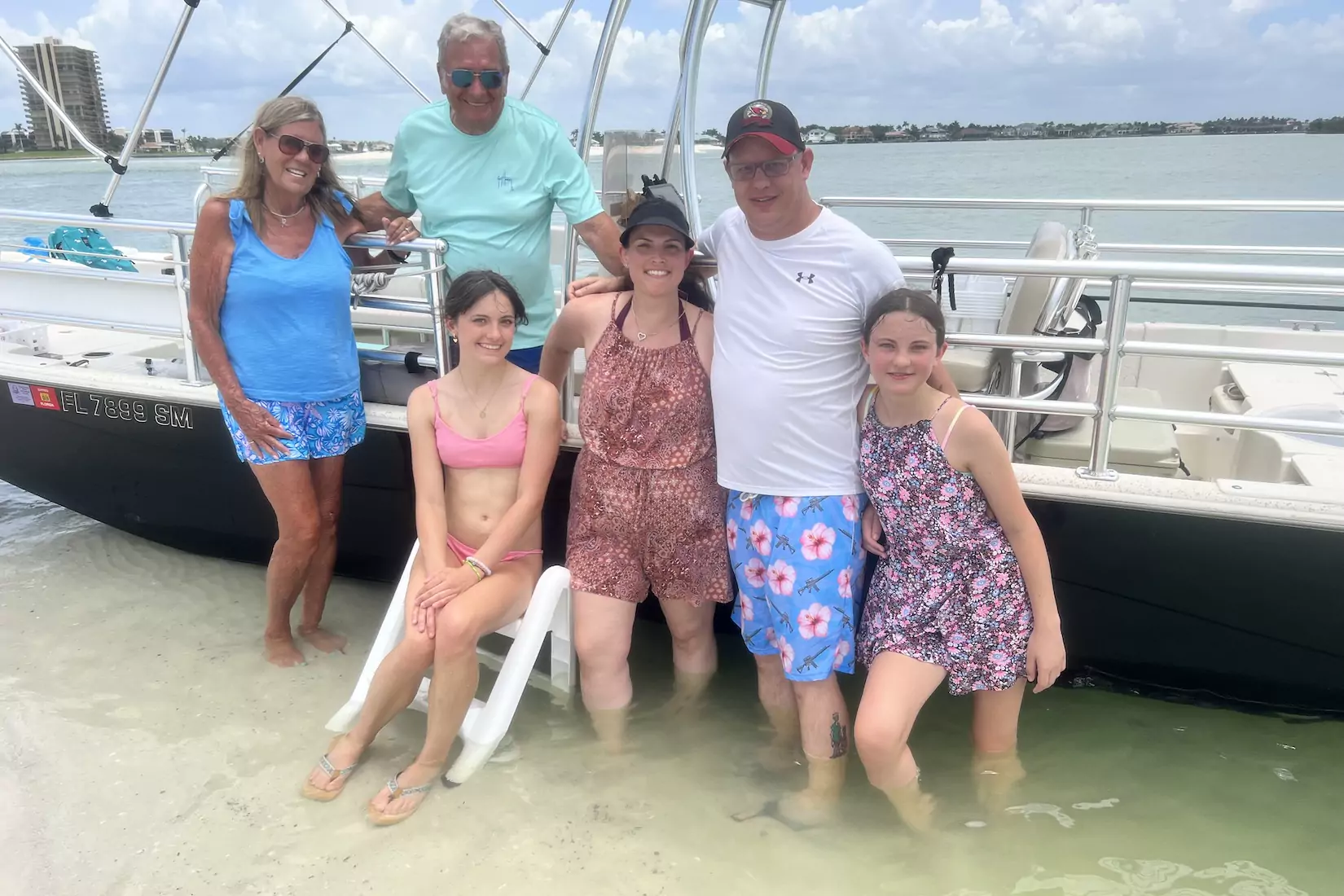
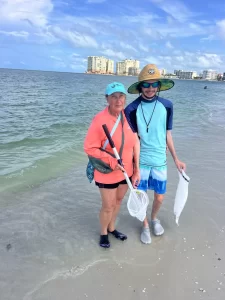 Do we need to wade into deep water to find good shells?
Do we need to wade into deep water to find good shells?





